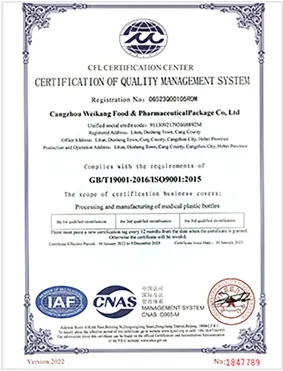https://www.wahmg.com/)">
uses of reagent bottle in chemistry lab
uses of reagent bottle in chemistry lab
Uses of Reagent Bottles in Chemistry Labs
In any chemistry laboratory, the organization and proper use of materials are essential for effective experimentation. One of the most fundamental pieces of equipment used in labs worldwide is the reagent bottle. These bottles serve a critical role in the storage, handling, and application of chemicals during experiments, making them indispensable tools for chemists.
Reagent bottles are typically made from glass or high-quality plastic, designed to be inert and resistant to the chemicals stored within. Their primary function is to hold and preserve various reagents—substances used for chemical reactions—ensuring that they remain uncontaminated and maintain their integrity over time. The importance of using appropriate storage containers can’t be overstated, as the wrong type of bottle can lead to reactions that compromise the chemicals or even cause dangerous incidents.
One of the principal uses of reagent bottles is to store solvents and reagents. For instance, volatile solvents, such as acetone and ethanol, must be stored in sealed reagent bottles to prevent evaporation and contamination from the environment. Additionally, many chemicals are hygroscopic, meaning they absorb moisture from the air. Storing these substances in airtight reagent bottles mitigates this risk, preserving their efficacy for future experiments.
uses of reagent bottle in chemistry lab

Furthermore, reagent bottles are also used for dispensing liquids during experiments. Many bottles come equipped with dropper or pour spouts, allowing for controlled release of liquids. This precision is crucial in chemistry, where even slight variations in the amount of a reagent can significantly affect the outcome of a reaction. By using reagent bottles with calibrated dispensing mechanisms, chemists can ensure that they are adding the correct quantity of each substance, thereby enhancing the reproducibility and reliability of experimental results.
Another vital function of reagent bottles is labeling. Each reagent bottle should be clearly labeled with the name of the substance, concentration, and any relevant hazard information. This practice not only promotes safety in the lab but also aids in the organization of a chemist's workspace, allowing quick identification and retrieval of necessary materials. Proper labeling practices can prevent accidents, such as the accidental mixing of incompatible chemicals.
Moreover, reagent bottles play a role in waste management and disposal in chemistry labs. Empty or expired chemical containers must be disposed of according to specific guidelines to minimize environmental impact. By using properly designed reagent bottles, labs can ensure safe and efficient disposal of hazardous materials, conforming to regulatory standards.
In summary, reagent bottles are vital components of any chemistry laboratory. They play a diverse role in storing, dispensing, and labeling chemicals, thereby facilitating safe and efficient experiments. Their proper use directly contributes to the accuracy and reliability of scientific research. As chemistry continues to advance and evolve, the importance of these bottles remains steadfast, underscoring their significance in educational, industrial, and research settings alike. Proper handling and organization of reagents using these specialized containers ensure not only successful experimental outcomes but also the safety of all laboratory personnel.
-
Wholesale Plastic Juice Bottles with Caps 16 oz Options Available Bulk Packaging SolutionsNewsJun.10,2025
-
Laboratory Apparatus Reagent Bottle – Durable & Chemical Resistant Bottles for Safe StorageNewsJun.10,2025
-
Squeezable Dropper Bottles Durable, Leak-Proof & CustomizableNewsMay.30,2025
-
Affordable Plastic Petri Plates Sterile & Disposable Lab-GradeNewsMay.30,2025
-
Eye Dropper Caps Precision 24/410 & Plastic Bottle-Compatible TipsNewsMay.30,2025
-
Affordable Mini Spray Bottle Price & Wholesale Deals Shop NowNewsMay.29,2025





















